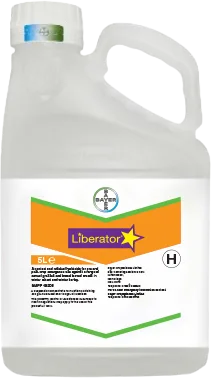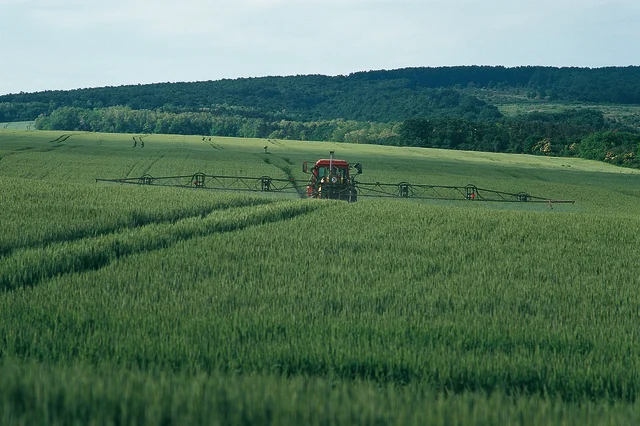Published on 14th February 2024
Weed Management
Managing the weed seedbank: lessons from France

Grass-weed management is a permanent fixture when planning arable rotations. Controlling grasses in wheat, barley and other cereal crops is always difficult because of the biological similarity between the crops and weeds. And other countries face similar problems, as we find out from the Bayer team in France.
Grass-weed management is a permanent fixture when planning arable rotations. Controlling grasses in wheat, barley and other cereal crops is always difficult because of the biological similarity between the crops and weeds. And other countries face similar problems, as we find out from the Bayer team in France.
Despite 12 million hectares of arable area, the problem grass-weeds are very familiar. Italian ryegrass causes difficulties in cereal crops across the country and black-grass is a problem in more northerly regions, where climatic conditions and cropping are similar to the UK. Further south, grain maize and sunflowers also feature heavily in the rotation, but don’t offer any easy fix for ryegrass.
Cultural control strategies, herbicides and resistance follow a similar pattern to the problems we face in the UK. “ALS Chemistry is affected by resistance,” says Amandine Berthoud of Bayer. “But our monitoring shows that the level of resistance is in fact lower than the perception.”
Randomised sampling of fields across the country found that 30% had ALS resistance, but 70% did not. Nevertheless, farmers have shifted much of the focus of weed control from spring to autumn and use stacks of actives at pre-em and early post-em.
"One thing we don't see in France is reduced sensitivity to flufenacet and other pre-em actives which I know can be a problem in the UK. In France, we are only allowed one dose of 240g /ha flufenacet per season, which helps prevent resistance in these actives."
Farmers in France also use diverse modes of action at pre-em. One of the most popular herbicides is Mateno, a co-formulation of aclonifen, flufenacet and diflufenican. Registration of a similar product was delayed in the UK, so we use a tank-mix instead but the level of efficacy is the same, the co-form is just more convenient to use.
Drilling later is another important tool to control weeds. In France the benchmark late drilling date is 30 October so 10-15 days later than the UK. In trials and on farm, the benefits are clear to see but the threat of rain always weighs heavily on the decision.
“Autumn 2023 has been very difficult in France, there has been more rain than usual, and it disrupted drilling for many farmers. I expect many will react by drilling early next autumn, which isn’t ideal for weed control but understandable. We know that however important weed control is, it’s not the only thing that matters on farm. That is why we have a series of farm trials to show the overall benefits of better weed control for yield and the seedbank.”
‘Culture Champs’ is a long-term series of trials to put integrated weed management into practice. Research takes place on farms in different regions of France and shows the benefit of delayed drilling and other cultural approaches. Cultivation and harrowing were also used at various stages to provide mechanical weed control and herbicides.
“In five years, we reduced ryegrass plant numbers from 450/m2 to 15/m2. The rotation was wheat, followed by sunflowers, wheat, maize and then wheat. The most important cultural controls were stale seedbeds, delaying wheat drilling until late October / early November and cover crops ahead of maize and sunflowers.”
“The benefit of delaying drilling was huge, in year one it reduced ryegrass numbers from 450 to 160/m2. In year three, the next wheat crop, it cut numbers from 185 to 15. By year five, we had managed to lower the background level of ryegrass and delayed drilling reduced plant counts from 35 to 15m2.”
But Ms Berthoud offers a note of caution; without proper controls, weed numbers can just as rapidly build up and cause problems again. Black-grass and ryegrass both produce large numbers of seeds, even if only 5-10% of seeds germinate the following season, there is still a huge potential burden in the following crop. Every plant controlled before it sheds seed makes a huge difference to the situation next season. Backing up successful cultural control with effective chemistry cuts seed return to low enough levels for sustainable control.
Source: Arvalis
“A full programme with aclonifen, flufenacet and diflufenican at pre-em and a post-em of mesosulfuron + iodosulfuron + thiencarbazone gives the best overall control in trials. In general, we find that delaying drilling, supports the efficacy of pre-emergence herbicides and we see very good levels of control.”
“Timing is important for the post-em because it is more effective against smaller weeds. Once again, delayed drilling helps because there is less time and cooler weather for weeds to develop before the post-em.”
In the Culture Champs programme, they also looked at programme cost as a percentage of the value of the final yield. Overall, following up with a post-em doesn’t greatly increase net yield but it does reduce head counts and subsequent seed numbers. In an integrated programme, the post-em is part of long-term planning to minimise weed pressure in future seasons.
In France, many farmers prefer to delay applying the post-em until they can assess weed levels. As a result, some choose pinoxaden which is more suited to late applications. But as the trial results show, there is an economic and weed control benefit to applying Atlantis-type chemistry even to relatively small populations of 5-10 weeds /m2. Delaying can mean missing the ideal application window for Atlantis which retains good efficacy against most grass-weeds and many broad-leaf weeds.
“There are lots of steps to get right for sustainable weed control. It’s easy to look at one cultural technique or new herbicide and say, ‘that is the solution’. But in reality, it is the cumulative effect of multiple controls that makes the difference.”
“Unfortunately, we haven’t found any easy way to control weeds here in France that farmers in other countries can copy. But I think we are improving how we integrate controls together and planning effectively for the long-term.”




